What is West County Cloth Wrapped Cheddar?
Cheddar is the UK’s biggest, I mean BIGGEST, cheese. At 2019, the UK cheese market was give or take £2.8bn, and cheddar nearly exactly half. Nothing else comes close. But to say that the cheddar we see on supermarket shelves is made in the way it used to be near the original town of Cheddar is far from correct.
West Country Cloth Wrapped Cheddar is Old School Cheddar, the cheddar that made cheddar famous. But the production of it is tiny. We are talking less than 1,000 tonnes from all producers together, compared to nearly 50,000 tonnes of Cathedral City alone (also made in the West Country). So what is West County Cloth Wrapped Cheddar? Come and find out.
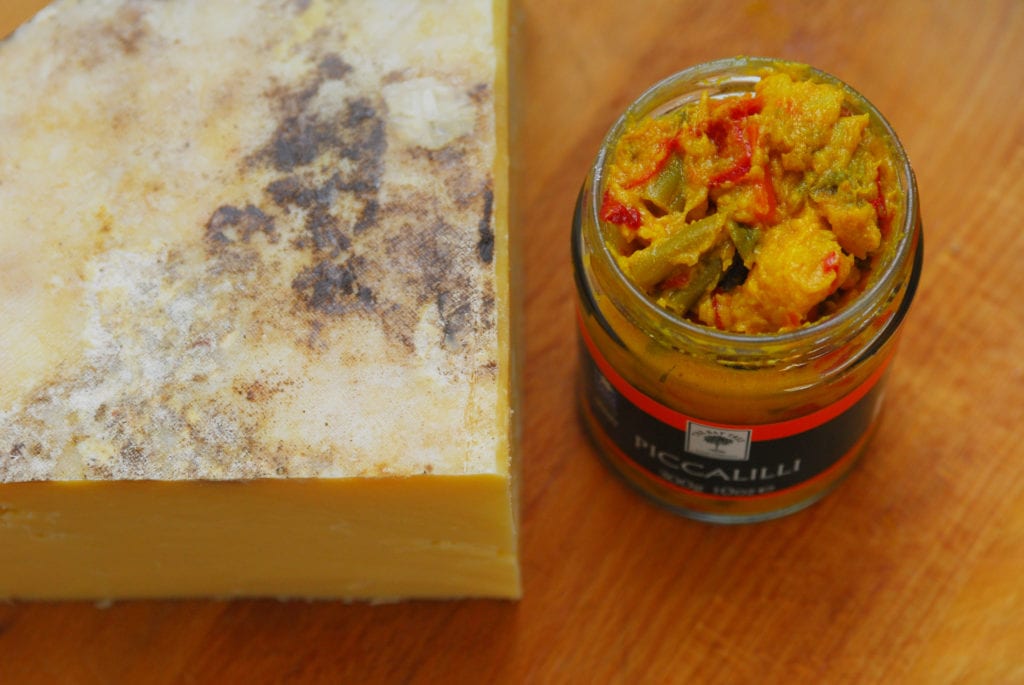
Why have West County Cloth Wrapped Cheddar on your table?
Here are six good reasons:
- Cheddar is the most popular cheese in the UK, and second most poplar cheese in the world
- West County Cloth Wrapped Cheddar is the original cheese
- West County Cloth Wrapped Cheddar is much more characterful on the cheeseboard than a block of yellow cheese
- West County Cloth Wrapped Cheddar has more complexity than your average cheddar
- Cheddar is a strong cheese, enough to hold its own with big wines and after big dinners
- It’s one of the classic 3: cheddar, stilton and brie and your guests will love it
There is a town called Cheddar in Somerset. As many cheese are named for towns or regions, and it is presumed that Cheddar is the source of the name. This may be because Cheddar Gorge, near the town of Cheddar, has natural caves which allow for the long cool maturation of this cheese which is at its best at 12 months.
There has been a “rule” that cheddar needs to be made with 30 miles of Wells Cathedral, the nearest big town to Cheddar. Today however, it has been adopted across the West Country of England, the counties of Cornwall, Devon, Dorset, and Somerset.
From a technical point of view, we now say that to make cheddar you have to use the cheddaring technique of repeatedly pilling the curd up on itself in blocks before milling the curd and putting it in the moulds. This doesn’t explain why cheddaring is called cheddaring though.
It is also said that originally the cheese had to be made within 30 miles of Wells Cathedral to be able to be called cheddar. Perhaps it should have been called Wells.
A bit of a timeline
Nobody knows the true origin of cheddar, but then most cheeses just “appear” out of many years of cheesemaking within a region. It is likely Cheddar has its root in the cheesemaking skills brought over after the Norman conquest, possibly from Cantal which is a French cheese of a similar style, shape and size. Some argue it predates that and the techniques were introduced during Roman times.
- 1170 King Henry II bought 10,240 lbs of Cheddar in 1170
- 1600s During the reign of Charles I cheddar was so popular it we said to be only available at the King’s court.
- 1840 Queen Victoria received a 1000 pounds weight cheddar wheel as a wedding gift.
- 1857 The Cheddaring process is codified by Joseph Harding. Joseph Harding is called the “Father of Cheddar”. He may have invented the cheese mill as well. Harding exported both cheddar and cheddar making which accounts for its popularity around the world today.
- 1901 Scott of the Antarctic took almost 1600 kg of cheddar on his famous but tragic 1901 expedition.
- WW2 The government limited the amount of cheese production to 5 cheeses, including cheddar. The standard recipe for cheesemakers not making another cheese was Government cheese, which became known as government cheddar.
- 1996 The UK adopts the PDO for a West Country Farmhouse Cheddar Cheese
- Now Cheddar is over 50% of the UK market in cheeses, valued at over £1.4bn each year in the UK alone. Cathedral city is about ¼ of that, and the UK imports another ¼ from Ireland.
Yes: its is such a popular cheese there have been many variations in where and how it is made.
The typical characteristics of a cloth wrapped cheddar are:
- that it is aged in permeable cheesecloth giving a firm hard cheese rind;
- is has a firm texture that breaks before squishing;
- that its salt and savoury flavours dominate its sweet flavour;
- that it has high complexity – additional subtle flavours outside sweet, salt, savoury, acid or bitter. The individual/complex flavours will vary from maker to maker and make to make.
Other “cheddars”
There are many other cheddar styles, many very good, most average and some down right dull. We can categorise them as:
- Bag wrapped cheddars: cheddars matured in impermeable barrier bags, not cloth, and so do not loose moisture during maturation. They do not have a rind and in theory can be aged longer due to the absence of air which enables moulds, enzymes and cheese mite. The outcomes tend to be squashier and less complex and therefore to many people less interesting. However, there are several very good quality bag wrapped cheeses.
- Cheddars that undergo pressing for remoulding. This gives them a very soft texture, and frequently are much sweeter than your average cheddar. These are often vey popular.
- Non-West Country cheddar-types often made matured in cloth, such as Lincolnshire Poacher and Isle of Mull. This is an artisan group of small cheesemakers using cheddar inspired recipes. Some are outstanding, some pedestrian and very farmhouse.
These other “cheddars” can have very good quality variations, and should never be discounted because they have innovated. Cheesemaking has always innovated, but this blog focusses on WCCWP
A standard drum, 22-26kgs in weight, usually 35cm or so in diameter, and similar height.
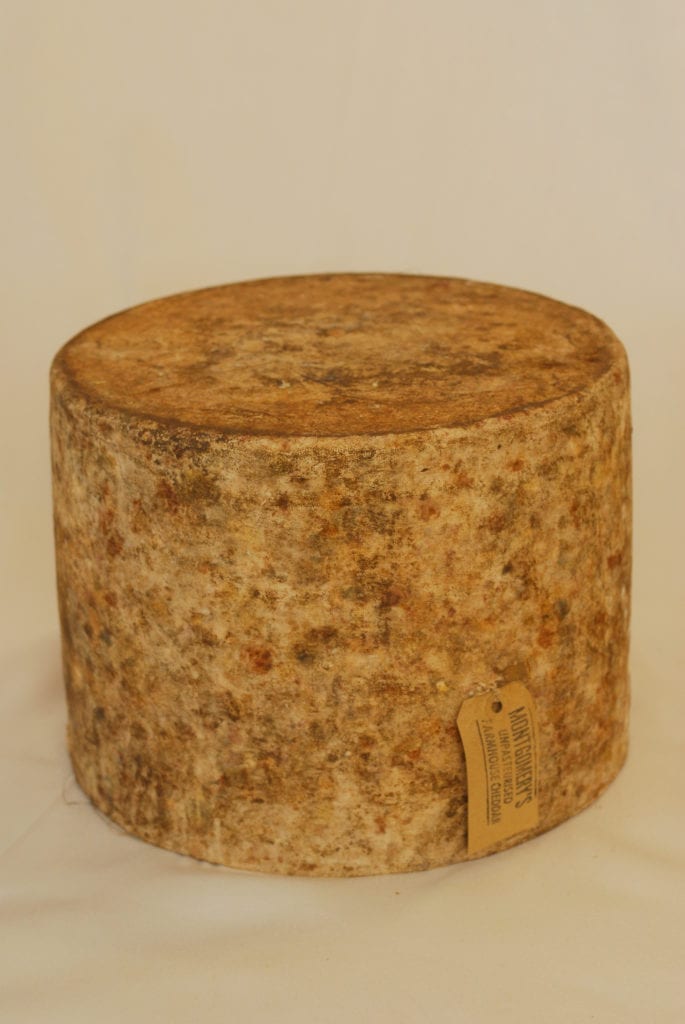
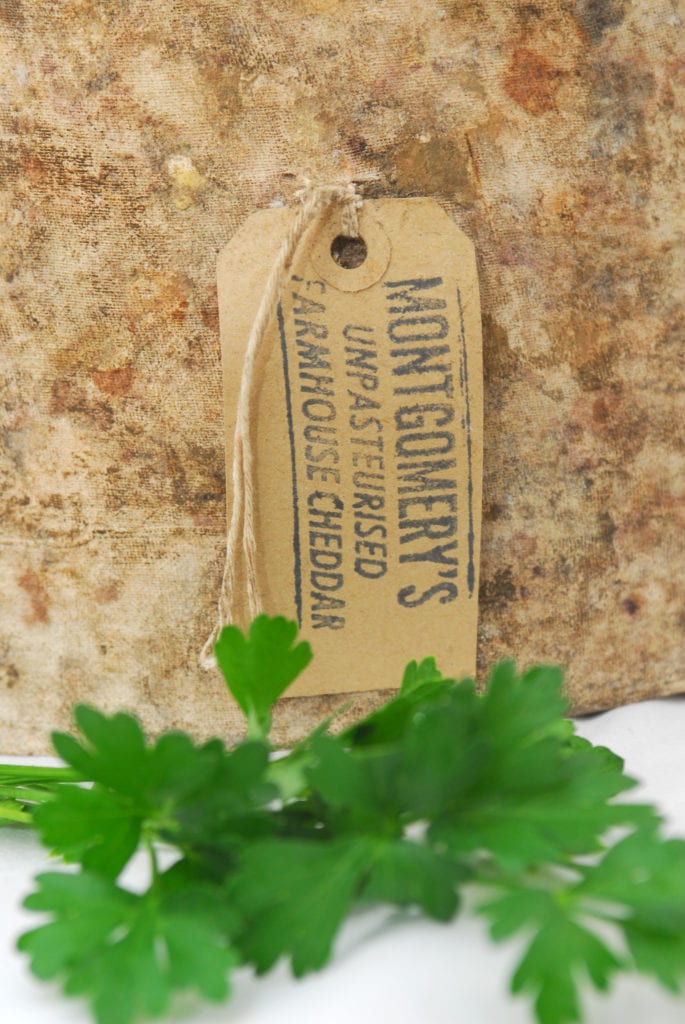

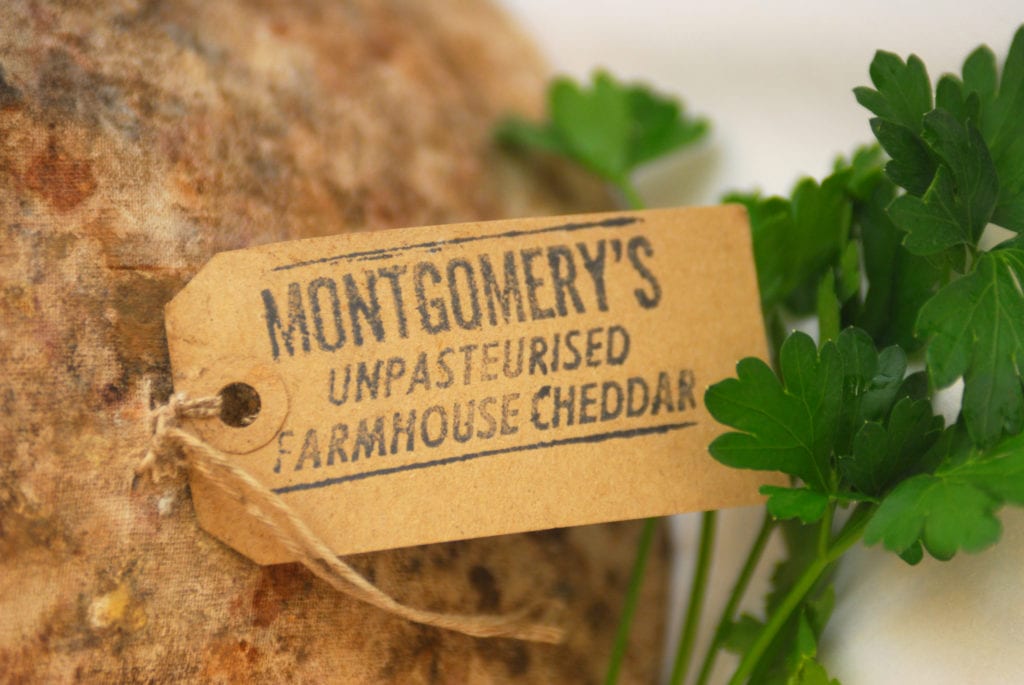
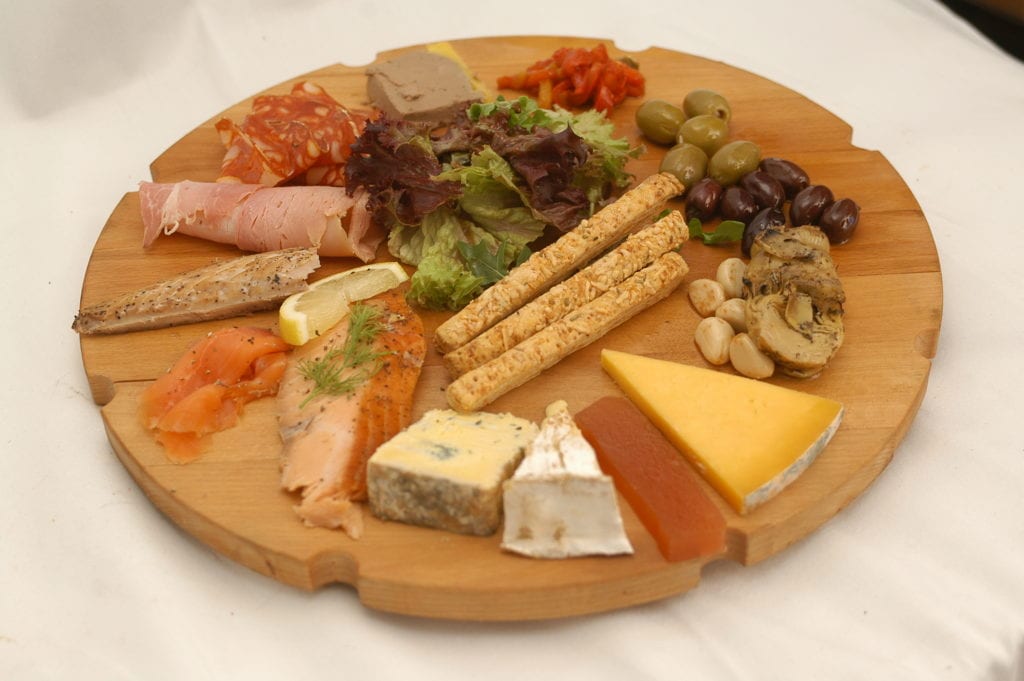




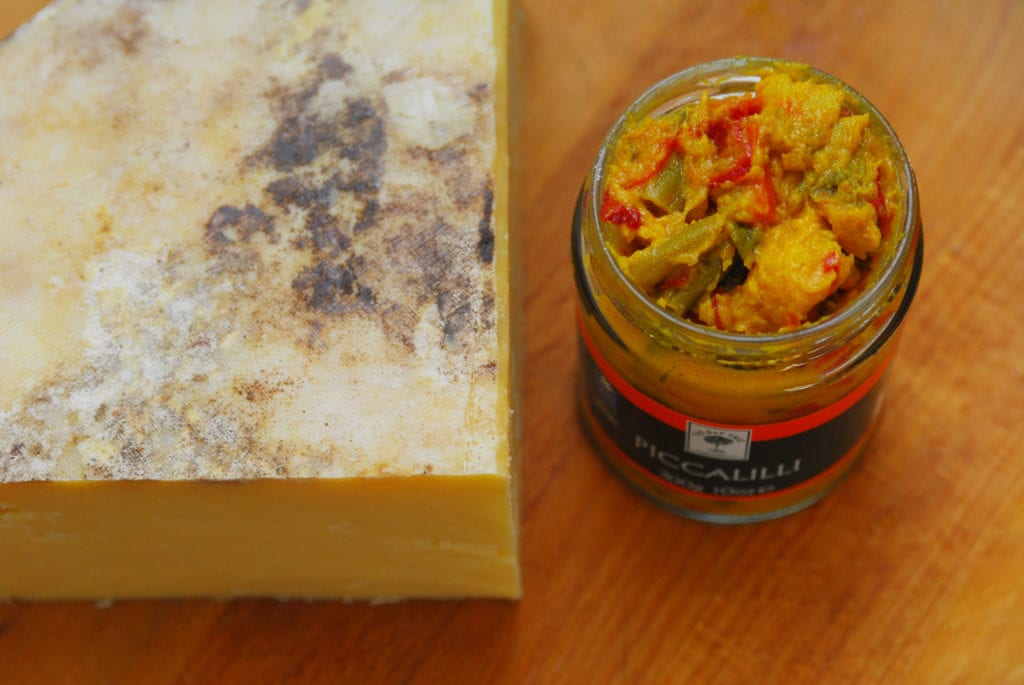
Paste
The paste of the cheese varies significantly over the life of the cheese:
- Mild to medium: The paste is smooth, whiter than it becomes later and squishier. Look for: Don’t bother
- Mature: Ageing will vary depending on demand. When cheeses hit high demand, the profile may drop to 10 months, and stretch to 13 in slow periods. Paste will be yellow, and small visible and closed cracks will be present throughout the curd. Occasionally there may be open cracks. Depending on the cheese there may be slight blueing – see below. Look for: Closed texture, no white spots, brown spots or significant blueing.
- Extra mature to vintage: As mature, but the curd will edge darker and the cracks close up a bit more as the body contracts with loss of moisture. Look for: Closed texture, no white spots, brown spots or significant blueing.
Rind
Once the cloth is removed, the rind varies from maker to maker. Montgomery has generally the most identifiable rind, with a firm hard cheese rind, brown spots and dusting of visible white moulds unique to the Montgomery cellars. Quickes and Westcombe also have pronounced rinds, but Keens make great effort to have little or no moulds on their rinds.
This does not appear to be important to flavour as each finds their own distinctiveness, but can help identify the cheeses.
Should you eat the rind? No. Well you can if you want to. It can be musty, dusty and bitter.
This tasting sheet is focussed on 12 month West County Cloth Wrapped Cheddar of no specific maker. Individual makers will profile towards certain flavours combinations.
Using the tasting notes:
- Paste applies to the body of the cheese
- Numbers range from 0-10, 10 being highest, 0 being not present
- Cheese can vary significantly in some areas, and number can vary. If you have anything you would like to add drop me a message
Before you taste the cheese…
| Texture/consistency | Paste | Rind | Comments |
| Texture | Hard, 7-8 | Hard 8-9 | |
| Consistency | Yellow with mild colour variations; frequent small closed cracks or fissures; small irregular holes very occasionally. Breaks rather than squishes when pressed. | Brown and thick and may be pitted and/or dotted with white or dark moulds | |
| Blueing | Occasionally has blue lines through the cheese. This is fault, but if slight only a minor one. | Cracks can open in the cheese for a number of reason, and moulds will colonise them. |
| Smell | Strong 4-6; milky, cheddary and musty |
When tasting the cheese
| Mouthfeel | Paste | Rind | Comments |
| Texture | Firm 6-7 | N/A | |
| Wet to dry | Mildly drying 5-6 | The salt/umami flavour quickly draws saliva into the mouth, more than compensating for the drying nature of the cheese |
| Simple flavours | Paste | Rind | Comments |
| Savoury | Strong 7-8 | – | West County Cloth Wrapped Cheddar is defined by its strong savoury salty flavour, with negligible sweetness |
| Sweet | Low 1-4 | – | |
| Salt | Strong 6-7 | – | |
| Bitter | 0-1 | – | |
| Acid | 5-6 | – | Acid is likely to be dominant in the aftertaste. Some older cheeses have higher acid referred to as “bite |
| Complex Flavours | Likely | Occasional | Rare |
| Dairy | Cheddar 8-9; Butter 5-6; Lactic 3-4 | Rancid butter 2-4; Raw milk 2-4 | |
| Fruity or Floral | – | Hedgerow or flowers 1-4; spices 1-4; mustard seed or white pepper 1-3 | |
| Vegetal or herbaceous | Grass, hay straw etc 1- | Yeast 1-5; | Hops 1-3 |
| Mineral or chemical | Woodsmoke 1-2 | Eggy 1-4 (fault); tobacco 1-3 | |
| Animal, fungal or fermented | Brothy 1-6; Meaty 1-6; silage 1-4; farmyard 1-7; earthy, musty, cheese cellar, wet cellar 1- | Urine 1-4 |
Overall assessment
| Complexity | West County Cloth Wrapped Cheddar can be simple or complex: 4-8 |
| Balance | West County Cloth Wrapped Cheddar balance can vary 3-9 |
| Length | 8-9 |
| Summary | West County Cloth Wrapped Cheddar has a wide variety of outcomes, from simple cheddar with low complexity, to high acid un balanced cheese to multi-flavoured slow revealing savoury cheddar. At its best it is generally characterised as high cheddar, butter and milk notes, with either dry hay or straw or meadow notes, brothy or yeasty embedded flavours and commonly some level of earthy, farmyard or silage. |
Not that many people. There are perhaps 8 or nine West County Cloth Wrapped Cheddar makers in the UK left. They are a depleted breed. Here are the ones I know who are still producing.
Barbers/Ford Farm/Wookey Hole: Cloth wrapped cheeses are made in Fords Farm, Dorset and matured up in the Wookey Hole caves during their last months, giving it extra provenance.
Cheddar Gorge: Very wild old fashioned farmyard flavours. Very good for your counter. For some it’s too much, other people love it. In my opinion the nearest you’ll get to a 19thC cheddar.
Goulds/Bratch Farm: Goulds used to do a very strong acidic cheese which was my go-to for the strong cheddar. I haven’t tasted it for some time (sorry!) so you will have a check it out for yourselves.
Keens: To me the most lactic cheddar of the group, many people’s favourite.
Montgomery: Highest in “low” (savoury/umami) flavours. Probably my favourite as I (very subjectively) lean away from milky flavours in cheddar
Quickes: Mary makes the most south western of the cheeses. Her cheese has more subtle meadowy and floral favours, and consequently I think of her cheeses as Spring cheddars. She also takes her cheese to 18 and 24 months for greater complexity but without significant acid.
Trethowan’s Pitchfork: New kid on the black, production is still small. Have never tasted it, will report back when I have. However, although they make exceptional Caerphilly, I would expect it to develop significantly as they gain more experience with cheddar.
Westcombe: Very innovative cheesemaker Tom Calver, and a great and growing cheesemaking team. They are unafraid of marrying the best cheesemaking traditions with modern technological opportunities. Very good and getting better all the time.
There are many similar cheeses to West County Cloth Wrapped Cheddar that are cloth wrapped, but they vary in important ways.
British alternatives:
- Hafod
- Winterdale
- Lincolnshire Poacher
- Isle of Mull
In Europe, France has the only cheddar like alternative in Cantal and its sub-set Salers.
All three.
- Lunch: Classic British cheeses, the territorials, knocks the socks off other cheese for lunch. The ploughman’s is a bit of fine British cuisine.
- Cooking: For cooking cheddar is fantastic in sauces and even on pizzas. West County Cloth Wrapped Cheddars are a bit expensive for cooking with generally, but it means you will never have wastage of a West County Cloth Wrapped Cheddar.
- Cheese board: always. It is the go-to for the British cheeseboard
Sweet or savoury tracklement: Jelly, pickle or chutney?
West County Cloth Wrapped Cheddar likes savoury accompaniments such as pickles or chutneys. They generally have punch and strength, so can stand up well to chilli products which often makes for good customer engagement
White wines: Fruity white wines can be excellent for lunch time/ploughman’s West County Cloth Wrapped Cheddar.
Red wines: Cheddar can stand up to many reds, but there are some that fail. The problem is noticeably tanic or acidic wines, as these bring out the worst in cheddar. A rough rule of thumb – good West County Cloth Wrapped Cheddar likes expensive wines!
Bitters: Very very good (my favourite) with traditionally hopped bitters. More uncertain with modern (Craft) hop varieties
Lagers: No.
Juices: Most juices go well, but dry or medium-sweet apple and pear juices are best. Heavily sweetened juices crush the cheeses.
Somerset Pomona: I mention this specific dink from Julian Temperley’s Somerset Cider Brandy Company as it is a simple delicious match, possibly the best match of all. You have to try it..
Ports: Port is OK. It is not as a good a match as port is with brie or stilton, but people still very much enjoy it.
The Environmental rules for brie are that you can leave it out of the fridge for 2 hours, and then return it to the fridge for normal use. You can leave it out of the fridge between 2 and 4 hours, and then it must be consumed or disposed of.
This is very limiting, and most ordinary people are either not aware of the rules or ignore them. Many of my customers over the years leave cheeses out, especially bries and camemberts to ripen them. As a professional I CAN NOT advise people to do this.
I can say that in my own home I try to find the coolest place in the house to do my final ripening. I am allowed to poison myself.
Larders are best if you have one, with stone, marble or slate shelves, but these are rare now. Some of my customers use their garages, unheated spare rooms, utility rooms or porches. They are trying to represent the producers maturing rooms, which means between 10 and 16oC for final ripening. Above 20oC and you will over ripen on the outside of the cheese and bring on a smelly rind while possibly still having a chalky centre. Kitchens are NOT good. Today’s kitchens are 21-24oC in temperature, which is too hot for ripening. These customers say 1-2 days is generally plenty. I am told they then put them back in the fridge to slow down the process again until they want to eat it.
Storage
- Number 1 choice – In your fridge: I use a Tupperware, and am quite happy putting all my cheeses together, unwrapped and even touching when I have a lot of cheeses in the house. The exception is the washed rind cheeses. Theses don’t play well with other and should have their own box.
Why doesn’t the white or blue mould get into other cheeses? Given enough time it will, but you’ve got a week. just keep eating your cheese at a good rate
- Number 2 choice – Clingfilm: it really works, keeps the air out and is less harmful on the environment than bagging them up
Storage DONTs
- I don’t like greaseproof paper. It is generally not recyclable nor proof from cheese drying out, and once used two or three times becomes dirty and a hazard. I agree it looks cool, but cheese look best naked anyway.
- Tin foil: some blue cheeses use it but it is not the same as the stuff you buy in supermarkets. It has a plastic coating on the cheese side. Don’t use your own.
Bring to room temperature before consuming, this means 20-23oC in most houses. An hour should be plenty for wedges, for large pieces leave a little longer.
Charlie’s top tips: How to buy a good piece of Cheddar
Here are my two golden rules:
- Always taste before you buy (if you can)
All cheeses are affected by their whole journey, not just who made them. The season of make, the weather on the day, who by and how they were matured, how long they will in the chill chain (chilled transport system) for. - Buy your wedge cut off from a big cheese (if you can)
All cheeses like to stay whole as long as possible. Pre-pack is never as good, head to the deli counter.
Is Cheddar suitable for pregnant and immunity fragile people?
Check the NHS guidelines which are good.
For people willing to take my advice, any hard cheese over three months old can not support listeria, the dominant bacteria of concern for pregnant people. Cheddar is a hard cheese more than three months old, so I go for it. Alternatively, if you prefer the “is it pasteurised” test for safety, check the label. There are both pasteurised and unpasteurised cloth wrapped cheddars. Quickes is a good example of a good pasteurised traditional cheddar.



